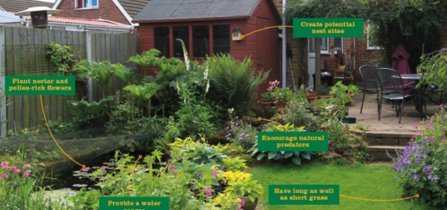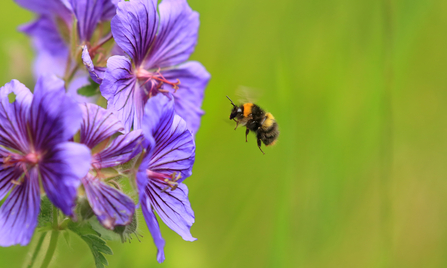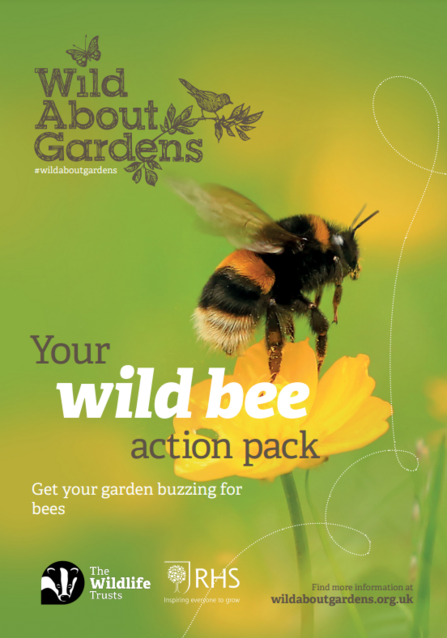
Bee a Friendly Gardener with Monty Don
Tom Marshall

Gardens are always a rich source of food for wild bees and with a little care can be made even better for them without any trouble or loss of pleasure to the gardener. You do not need rare or tricky plants. In fact the opposite is true.
Bees need pollen and the smaller flowers of unhybridised species are likely to be a much richer source than huge show blooms on plants that are the result of elaborate breeding.

Jon Hawkins - Surrey Hills Photography
Any flower that is open and simple, such as members of the daisy family, or any that are set like a lollipop on a stick, such as scabious, and all members of the thistle family, are ideal for attracting honey bees, which have rather short tongues so need easy access.
Bumble bees have longer tongues so are better adapted for plants that have more of a funnel shape, such as foxgloves.
Bees love any flowering trees, so an apple or a pear is a huge bonus. All legumes such as peas, beans, clover and sweet peas, as well as dandelions, blackberries, asters, ivy, and willow, are as attractive to a foraging honey bee as your carefully cultivated borders. A garden without bees not only reduces its fertility but also diminishes its beauty. You can keep bees as I do, or simply provide a source of food for them. But one thing is certain: we cannot do without them. So as gardeners we should do everything we can to welcome them as an integral part of a beautiful garden.
You do not need tricky plants - in fact the opposite!

Download your free Wild Bee action pack!
To make it easy for everyone to help wild bees, we’ve produced a short e-booklet. In it you’ll learn how our many different types of bees live, why they are threatened – and what you can do to help them flourish.
For example, you can revive a tired bee with sugar solution. You can also visit wildaboutgardensweek.org.uk for more information.
